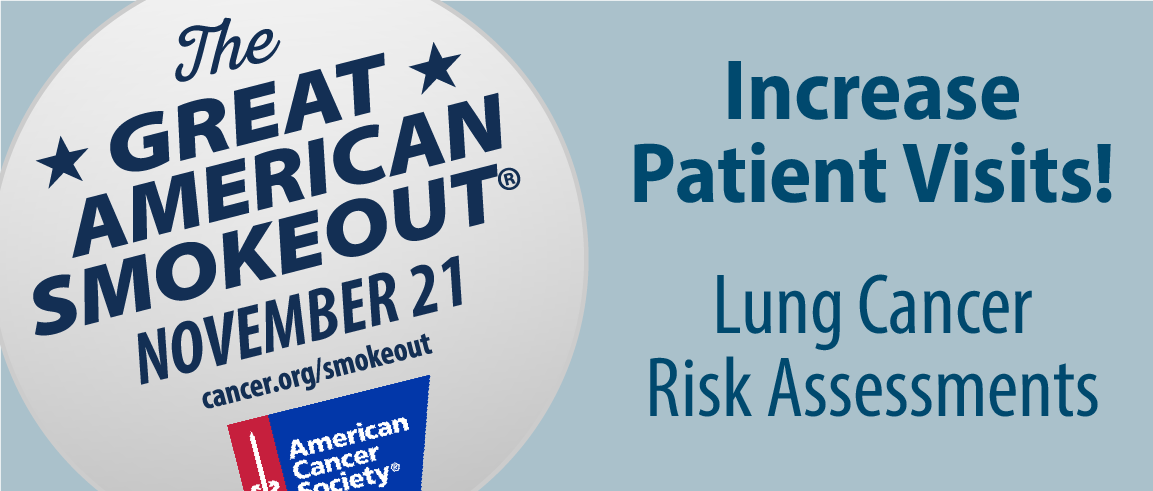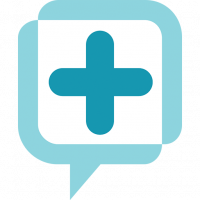The Great American Smokeout, the American Cancer Society’s annual anti-smoking campaign, is a fantastic opportunity to engage people who have concerns about their smoking history. Specifically, smoking cessation promotions via social media can increase clinical consultations for those at high risk of lung cancer. BTW, our Lung Cancer Risk Assessment can help in several key ways. 😉
Great Amercan Smokeout
First off, a bit of Great American Smokeout (GAS) history in their own words:
“For more than 40 years, the American Cancer Society has hosted the Great American Smokeout on the third Thursday of November. The Great American Smokeout is an opportunity for people who smoke to commit to healthy, smoke -free lives – not just for a day, but year round.”
Undoubtedly, your health system has smoking-cessation resources. Because of the ACS, November is a great time to leverage them. Take advantage of the momentum the GAS creates by blitzing your own anti-smoking social media campaign. Drive folks to those resources. Repetition is key to cutting through the background noise for today’s consumers. Let the ACS help shoulder some of that burden.
If you are concerned about direct ROI, consider adding our Lung Cancer Risk Assessment to the mix. It is more likely to funnel high-risk patients into a clinical workflow than general, static materials.
Lung Cancer Risk Assessment
Beyond the benefits that our HRA always generate, we think an HRA is especially effective in this use case for a few reasons. First, the people that connect with you are almost certainly harboring concerns about their smoking. But they don’t know what to do next. Obviously, they are unlikely to just make an appointment. An evidence-based, non-judgmental questionnaire is a pretty non-threatening way for them to baby-step into doing something about it. But it is also more specific, personalized, and definitive than just “learn more” or “download our materials.”
With our HRA, you can promote a very clear call to action. For example your promos might say, “Current or past smoker? Find out if you qualify for a free lung cancer screening. It’s free and takes just 3 minutes.” This concrete path helps consumers picture themselves taking the recommended steps. They can imagine how this would help them discover if their fears are justified or not, for their exact situation. Everyone knows that smoking is bad for you. But they want to know, based on who they are and what they have done, how concerned should they be? And what should they do next? Not people in general.
The fact the next recommended steps may be free can also be motivator.
Free Screenings or Other Alternatives
Low-dose CT scans are covered once a year for high-risk Medicare beneficiaries age 55-77. Our HRA can help them know if a CT scan is likely to be free or not.
Also, scans are not risk-free. The new coverage includes patient counseling and education about tobacco use and the potential harms and benefits of lung cancer screening. Regardless of sin costs, informed decision-making is important for high-risk patients and their families. Patients should make a decision regarding screening, and their over-all health, after being informed about benefits, limitations, and harms associated with cancer screening.
Benefits of Early Intervention
Catching lung cancer early is incredibly important. Obviously, it can save patient lives. But here are other reasons, too.
Sometimes it takes multiple interventions before someone quits smoking or pursues treatment. So it is critical that responsible health systems continue to beat this drum. Even if it seems self-evident.
Plus, if you are an IDN, with a payor side, early treatment is also cheaper treatment. So that is an added benefit.
Conclusion
There is still time if you want to launch a Lung Cancer HRA before the Great American Smokeout. Contact us for help.















 Thank you for your interest.
Thank you for your interest.